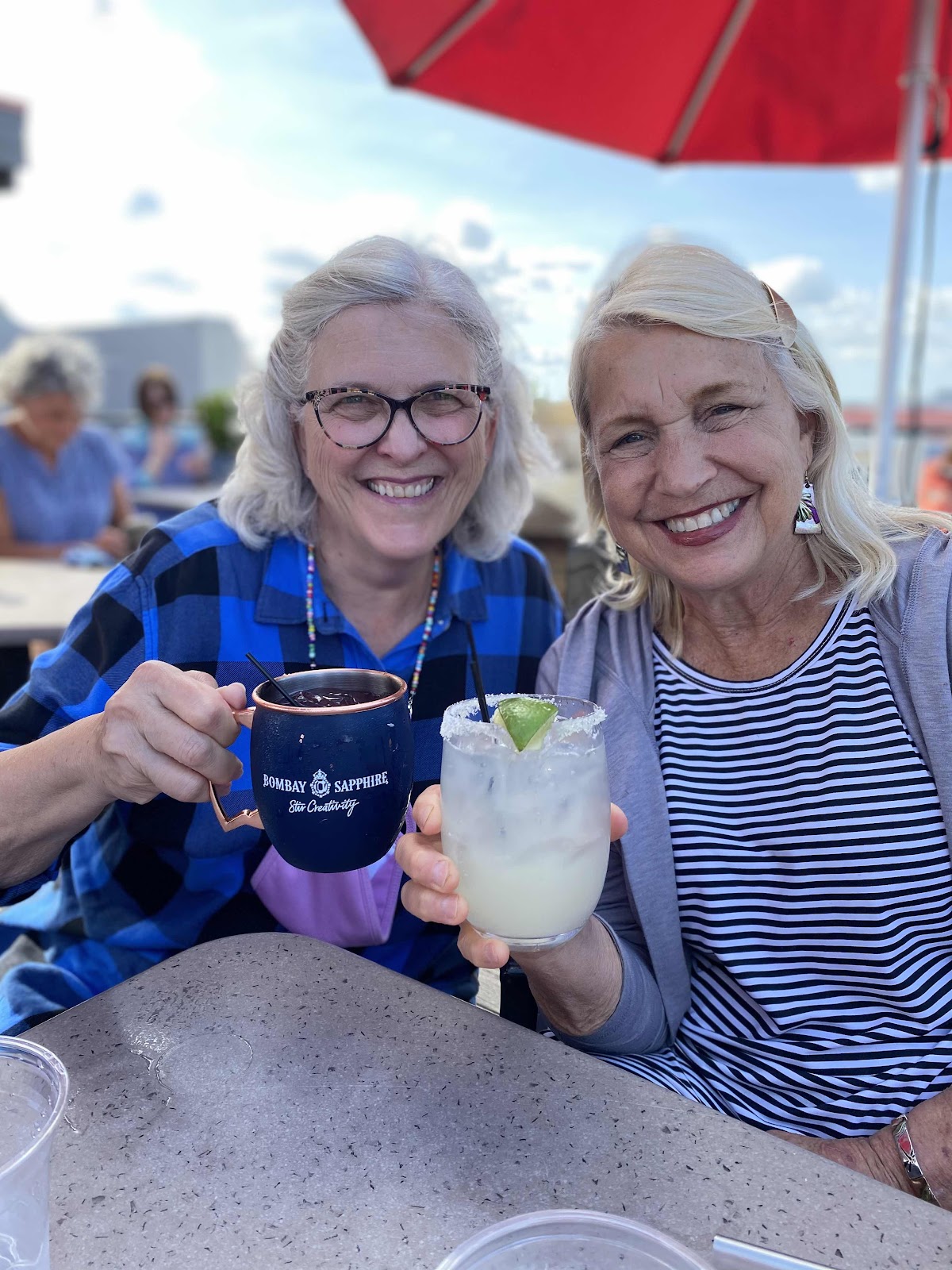As you can see, we had beautiful weather for our day to go into Charleston!
South Carolina holds the distinction of being the first state to secede from the Union in December 1860 shortly after Abraham Lincoln was elected President, and was one of the founding member states of the Confederacy in February 1861. The Confederate bombardment of the U.S. garrison at Fort Sumter in Charleston Harbor on April 12, 1861 is generally recognized as the first military engagement of the war. Fort Sumter is a sea fort built on an artificial island protecting Charleston from invasion. The four million bricks that were used to build Fort Sumter were produced by slaves at various South Carolina plantations.
Once the Union Forces abandoned the Fort, Confederates occupied it and allowed the Confederates to create a valuable “hole” in the Union blockade of the Atlantic seaboard. In fact, Gone with the Wind fans might remember that Rhett Butler engaged in blockade running and brought food, supplies, items from England to the South - a dangerous and PROFITABLE business!
In July 1863, Union Troops laid siege to Fort Wagner (located on Morris Island across the bay from Fort Sumter) with the help of the 54th Regiment, the African American regiment featured in the movie Glory. More than half the regiment was lost in that battle. For his bravery at Fort Wagner, Sgt. William H. Carney became the first African American to earn the Medal of Honor, the country’s highest military honor.
Once Union troops succeeded in taking Fort Wagner from the Confederates, they were able to set up canons pointed at Fort Sumter. Over the next 15 months, Union artillery effectively leveled Fort Sumter eventually firing nearly 50,000 projectiles at the fort between September 1863 and February 1865. Only when General William Sherman was poised to capture Charleston (after Sherman’s march to the sea), did the Confederate troops finally evacuate in February 1865.
After our tour at Fort Sumter, it was onto exploring Charleston for the rest of the day. First stop was finding lunch outdoors that was dog friendly, too.
For those people who have been to Charleston, you know how picturesque it is, complete with outdoor markets, horse-drawn carriages, and lots of flowers. It definitely seems like people were out and about - a welcome sight after this pandemic year. Masks were still required inside and many people on the streets were masked, so all in all, it was very comfortable. We also felt good knowing that we were all vaccinated and spending our time outside - right in line with the new CDC guidelines for masking that came out today.
After our lunch, we went to the Old Slave Mart Museum, the first African American slave museum. It is often staffed by individuals who can trace their history to Charleston slaves. Many people don’t realize that at one point as many as 35-40% of slaves entered the United States through Charleston. The Old Slave Mart was built in 1859 and is considered the last surviving slave auction gallery in South Carolina. The Old Slave Mart was built when South Carolina prohibited outdoor slave trade on street corners - this was because city officials were concerned with the optics of chained slaves being auctioned off in full view of the public.
One of the interesting thing we learned was the distinction between Transatlantic slave trade and domestic slave trade. The city of Charleston played an active part in both the Transatlantic and the domestic slave trading. European and American slaves traders captured and sold more than 12 million slaves to countries in Europe. South America, and the United States. Gadsden’s Wharf in Charleston was the last and most important disembarkation point for enslaved Africans coming into the United States. Completed in 1772 by slave labor, the 840 foot wharf could accommodate up to six ships at once. Over 100,000 African men, women, and children arrived in Charleston and were sold into slavery from 1783-1808. In the early 1800s, more and more countries outlawed transatlantic slave trade (the Unites States outlawed Transatlantic slave trade in 1808), but then the slave trade moved to “domestic slave trade.” Shockingly, during the last few months of 1807, the number of imported enslaved Africans exceeded demand and potential profits for the slave traders dropped. So the traders just put the enslaved Africans in warehouses or pens (like had been built at the Old Slave Mart) while they waited for prices to climb. Due to lack of nutrition, little clothing, and exposure, more than 700 Africans being held in pens died during the winter of 1807-1808. For these reasons, the historical marker by Gadsden’s Wharf calls it “hallowed ground.” Interestingly, in 1860 just before the Civil War started 57% of South Carolina’s residents were enslaved African Americans.
After our time at the Old Slave Mart Museum, we enjoyed walking around historic Charleston.
The puppies, Ellie and Monkey have been good traveling companions. One thing we’ve noticed is what a magnet two cute dogs are for all kinds of people and children. Many people stop us and ask if it’s okay to pet the dogs.They have been a real hit!


We finished our day in Charleston on a rooftop bar/restaurant with some drinks and appetizers before heading back to the campsite.
We finished our day in Charleston on a rooftop bar/restaurant with some drinks and appetizers before heading back to the campsite.
This photo is from a couple of nights ago where Lynn was “quizzing us” on Civil War facts from some cards she bought in a museum gift shop. Seated next to her is her daughter, Anna, who is leaving us tomorrow morning. It’s been just so much fun to have Anna with us the last six days!

No comments:
Post a Comment